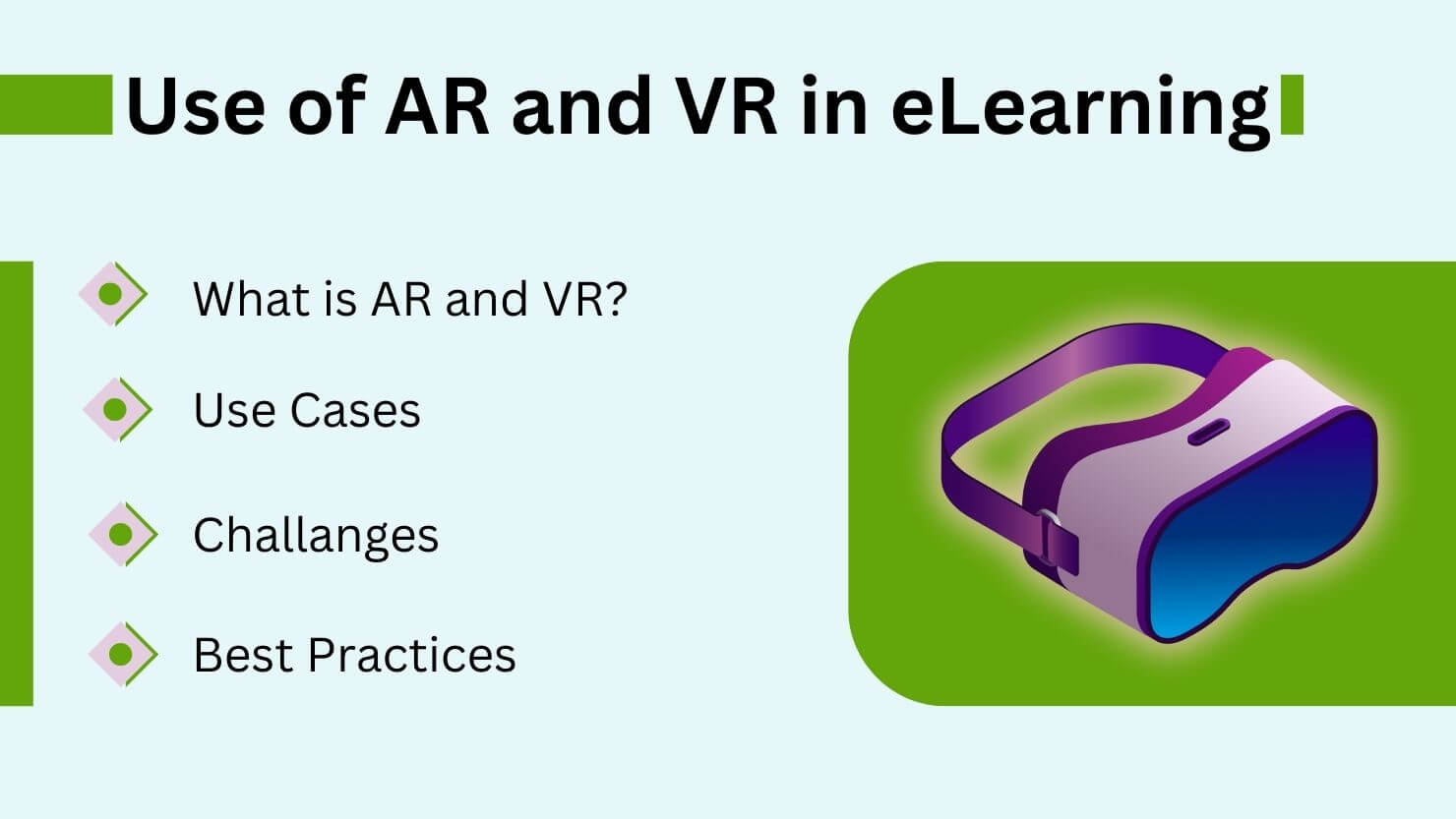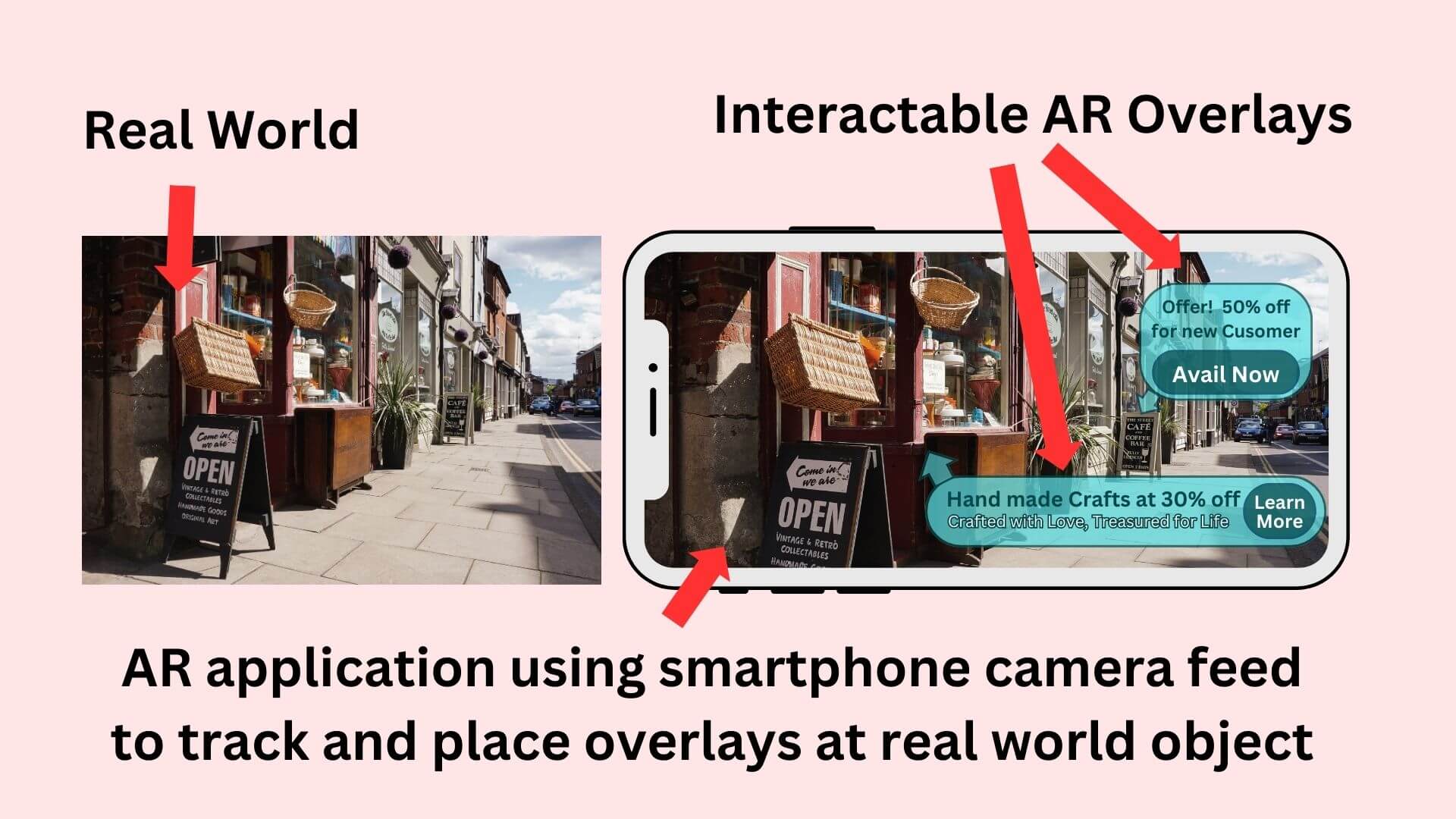
Since the inception of technology, it has shaped the education system profoundly, slowly giving rise to eLearning. With the evolution of digital tools, modern eLearning has become more than just a medium of delivering knowledge, it now thrives on interactivity. In today’s world, you can use Authoring Tools to create interactive and engaging eLearning content. But when we talk about interactivity another couple of techs are in trend nowadays, which are Virtual and Augmented Reality.
Virtual Reality and augmented reality have taken gaming to another world but these techs are more than just a tool to be used only for gaming. AR and VR are nowadays used for a variety of purposes such as training, education, and health. In this article, we are going to dive deeper into the world of AR/VR in the eLearning.
What is Virtual Reality (VR)?
Virtual Reality is a simulation of a digital 3D environment that can be experienced with the help of a VR Headset. Virtual Reality allows you to experience, navigate, and interact virtual 3D environment with the help of the headset’s motion sensor and motion controllers that come with it.
Imagine stepping into a 3D game, not just watching it on a screen but feeling like you’re inside the game world itself. Virtual Reality makes this possible through immersive headsets. This is what can be leveraged to make eLearning more engaging, interactive, and effective.
Virtual Reality eLearning applications:
- VR is used in the field of Pilot training by creating a real-world-like simulation in VR and letting pilots experience that.
- VR can also be used for making history students experience ancient civilizations.
- Corporates can use VR to train their employee in learning safety protocols.
What is Augmented Reality (AR)?
Augment Reality overlays interactive digital elements onto the real world with the help of AR glasses or smartphones. These digital elements could be images, text, animation, or 3D models. AR tracks the physical surroundings with the help of AR glass or live-feed of your smartphone’s camera and then places the interactive elements onto the tracked position.

Imagine you are wearing glasses and looking around, glasses overlay pieces of information about the things you look at, this is pretty much an example of Augmented Reality. AR is very useful technology for use cases like eLearning, shopping, gaming, etc.
Examples of AR in Action:
- AR can be used in language learning apps that can identify real-world things and place vocabulary labels above them.
- Books can be made more interactive by incorporating augmented reality. An app can be provided that provides more interactive elements if the student scans the book’s pages.
How AR and VR enhance eLearning?
AR and VR allow you to make an immersive learning experience and bring eLearning to life. It bridges the gap between theoretical knowledge and practical application. It makes learners engage with the eLearning content by enabling an interactive experience, learners can immerse themselves in a realistic virtual environment. You can train learners by creating a real-life scenario.
These technologies enable learners to:
- Engage actively with the learning content, with focus and motivation.
- They can practice safely with the help of VR in real-life scenario training.
- They retain information for a longer time as they learn it from immersive and memorable experiences.
AR and VR use cases in eLearning
Skill Based Training
AR and VR allow learners to practice learning experiences safely in a risk-free environment. So, these can be used to train new employees by creating real-world-like simulations without the risks of real-world consequences.
Such as Pilot or maintenance training. A real-world flight simulator can be created to train a new pilot in situations like turbulence, emergencies, and various weather conditions. Pilot failing in a simulator won’t result in real-world accidents. An AR training program can be created for maintenance training. Companies like BMW use AR headsets to guide technicians through complex repairs with overlaying instructions on machinery.
Medical Education
AR and VR have been very effective in medical training. VR is used to train medical students with virtual surgeries with interactive and immersive learning content. AR on the other hand been used with apps to let students explore human body anatomy and organs virtually.
Corporate Training
AR and VR can be used for corporate onboarding. Employees can be trained with soft skills and safety protocols. Walmart uses VR to train employees in customer interaction and conflict resolution.
STEM Education
For STEM education, AR and VR can work like a boon. It can be used to create learning experiences to simplify abstract STEM concepts by making them interactive and immersive. Learners can be allowed to experiment with virtual labs or explore scientific concepts in a 3D environment.
Challenges of Implementing AR and VR in eLearning
Implementing AR and VR in eLearning is quite ambitious. It comes with a lot of challenges lets look at the list of challenges.
- High Development and Implementation Costs: It requires costly hardware tools and software for content creation.
- Technical Expertise Requirements: It requires skilled professionals to create eLearning AR and VR content with Development tools.
- Potential Health and Safety Concerns: Extended use of VR headsets can lead to physical Discomfort, such as eyestrain, motion sickness, or fatigue.
- Content Development Time: AR and VR development is time-consuming as it requires multiple steps and the entire process is iterative.
- Content Maintenance and Updates: AR and VR content need to be kept updated.
- Learning Curve for Users: It requires a steep learning curve for both the instructor and the learner as they first have to understand how to use a VR headset.
Popular AR and VR tools for eLearning.
- Authoring Tools: Some authoring tools (Adobe Captivate) provide AR and VR features you can use to make VR learning projects.
- Game Engines: Game engines like Unity and Unreal Engine allow you to create immersive 3D AR and VR content. You can leverage them to create AR and VR eLearning experiences.
AR and VR Best Practices
These are a few of the best practices one should follow to create a successful AR and VR eLearning experience.
- Start small: Integrating AR/VR can be resource-intensive, so, starting small would be a better idea, once a smaller target is achieved, development experience can be used for a bigger target next.
- Focus on Learning GoaL: AR/VR whole new possibility in eLearning but it should always be fulfilling the Learning goal and not deviate from its objective.
- Evaluate Continuously: Track learner interaction, and ensure that the content is achieving its goal, Iterate the design based on the learner’s experience data.
Conclusion
Day by day eLearning is adopting more technology to make learning more engaging, and interactive to produce better results. AR and VR are some of the latest trends among eLearning professionals. Incorporating can help you make learners more interested in learning content, make them engage, and at the same time they are more likely to memorize information due to such memorable immersive experiences.
I hope that now you have a complete picture of AR and VR uses in eLearning and it helps you in the journey of making AR/VR-based eLearning content. Don’t forget to share with us about your experience with incorporating AR/VR.
FAQs
Virtual Reality (VR) is a digital simulation of a 3D environment that immerses users, allowing them to navigate and interact with the environment using VR headsets and motion controllers.
Augmented Reality (AR) overlays digital elements, such as text, animations, or 3D models, onto the real world in real-time using devices like AR glasses or smartphones.
AR and VR make eLearning interactive, engaging, and immersive. They allow learners to practice real-world scenarios in a virtual environment, bridging the gap between theoretical knowledge and practical application.
Skill-Based Training: Safe simulation environments for pilots, technicians, and other professionals.
Medical Education: Virtual surgeries and anatomy exploration.
Corporate Training: Onboarding and soft skills development.
STEM Education: Virtual labs and interactive 3D scientific concepts.
-High development costs for hardware and content creation.
-Need for technical expertise.
-Potential health concerns, such as eyestrain and motion sickness.
-Time-intensive content creation and updates.
Authoring Tools: Articulate Storyline,Adobe Captivate for VR-based projects.
Game Engines: Unity and Unreal Engine for creating immersive 3D content.
AR Glasses and Smartphones: Devices for delivering AR experiences.
